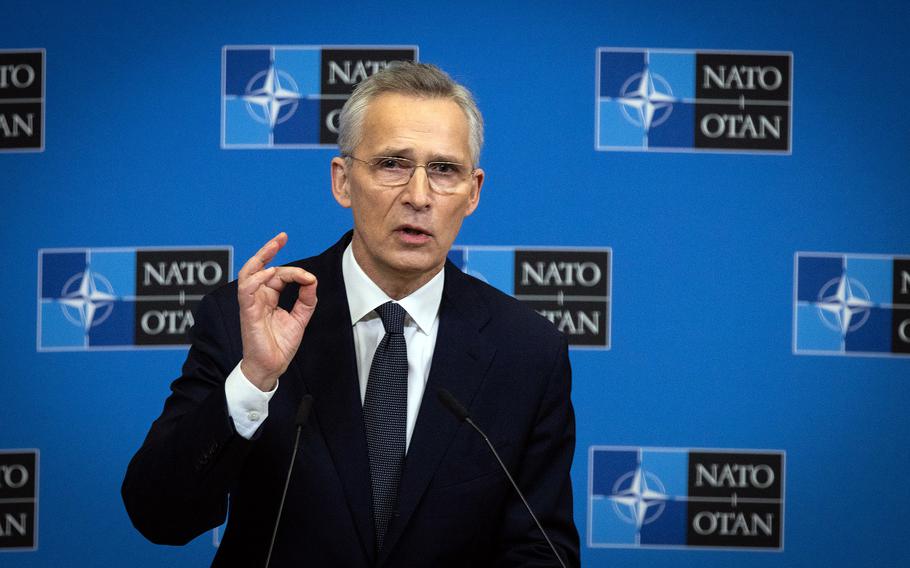
NATO Secretary-General Jens Stoltenberg speaks to the media in Brussels on Feb. 14, 2024, ahead of a meeting of allied defense ministers. Stoltenberg said he expects 18 of the alliance's members to spend 2% of their gross domestic product on defense this year. (NATO)
Nearly 20 NATO countries are expected to hit the bloc’s defense spending target this year, marking a leap forward for an alliance that has faced decades of harsh criticism for missing the mark.
In 2024, 18 allies will spend 2% of their gross domestic product on defense, NATO Secretary-General Jens Stoltenberg said Wednesday ahead of a meeting this week of allied defense ministers.
Stoltenberg did not specify which of the 31 countries in the alliance are on track to reach the goal.
“That is another record number and a sixfold increase from 2014,” Stoltenberg said.
At that time, only three allies met the threshold, prompting NATO to set a 2024 target for full compliance.
NATO allies in Europe will invest a combined $380 billion in defense this year, a commitment that amounts to 2% of their cumulative GDP for the first time, Stoltenberg said.
Stoltenberg’s announcement on defense spending comes days after former U.S. President Donald Trump took issue with NATO members that have consistently fallen short of the benchmarks.
Trump’s comments, which came Saturday during a campaign stop in South Carolina, caused shockwaves in Europe. He said he would encourage the Russians “to do whatever the hell they want” to NATO countries that didn’t spend enough.
In doing so, the frontrunner for the Republican presidential nomination called into question whether the U.S. under him would stand by NATO’s linchpin Article 5 provision that an attack on one member state is an attack on all.
Stoltenberg responded that any doubt cast on the allies’ willingness to defend one another increases the risks of war.
The bloc “has been able to prevent a military attack against any NATO ally for 75 years, and we have done that because it has been absolutely clearly communicated ... that we are there to protect allies,” Stoltenberg said Wednesday.
The push for hitting the 2% benchmark gained momentum in 2014 after Russia’s initial invasion of Ukraine. The second Russian invasion of Ukraine eight years later caused Finland and Sweden to end decades of neutrality and seek NATO membership.
Finland joined last year, becoming the 31st member of the alliance. Sweden’s hopes of simultaneous accession with Finland were dashed by Turkey and Hungary, and the Swedish bid is still pending almost two years later.
In 2023, only 11 NATO countries, or 35%, spent the desired level of GDP on defense. Poland, the U.S. and Greece came in above 3%. The other eight to hit the mark were Estonia, Lithuania, Finland, Romania, Hungary, Latvia, the U.K. and Slovakia.
While not all members will reach the defense spending goal in 2024, having about 60% of the alliance in line with the target amounts to a significant turnaround.
“We are making real progress,” Stoltenberg said.